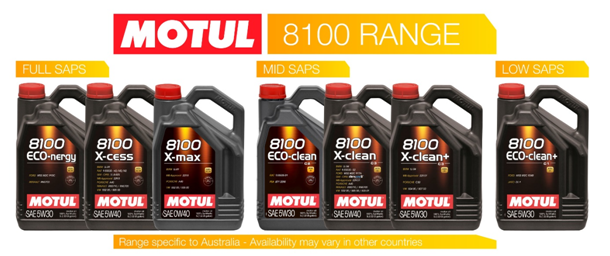MOTUL 300V Range – 100% synthetic ESTER Core
Motul has built its reputation on the motorsports range of oil called 300V. Suitably named after exceeding 300 victories achieved with this formulation incorporating Motul’s proprietary Ester technology. Each viscosity is referenced against different engines in different racing categories. Porsche, Nismo and Mugen are but a few. The 300V range is accompanied by competition gear oils, brake fluids and cooling fluids to ensure the highest level of protection and endurance in the most extreme conditions.
The 300V range can be used from the highest level of motorsport down to the everyday level of performance cars. 300V can be used in either spark ignition or compression ignition vehicles which is to say:
- Petrol (Leaded, Race Leaded, ULP, and PULP, Race Unleaded)
- Diesel (Standard, Ultra Low Sulphur, Bio-)
- Ethanol (E85, E100), Methanol and Alcohol
*Warning – Drain intervals for race fuels, including Ethanol, Methanol and Alcohol fuel types are subject to fuel dilution and water absorption. Neglecting to drain at suitable intervals will cause irreparable engine damage.
To find out more about the Motul 300V range, visit the Motul website HERE.
IMPORTANT –There is an exciting new product range release for 2015 that all users of E85 need to know about. Read on to find out more!
MOTUL 8100 Range – 100% Synthetic
The 8100 range has a comprehensive list of OEM approval oils to suit the modern European vehicles meeting strict Euro 4, Euro 5 and Euro 6 emissions standards.
The range is broken up by 6 categories, 3 categories are for fuel economy, with the remaining 3 categories covering engine protection. What defines these categories relates to SAPS and HTHS.
What is SAPS and HTHS?
SAPS stands for Sulphated Ash, Phosphorus, Sulphur. All of which are naturally occurring elements in fluids refined from crude oil such as engine oil and diesel fuel.
There is currently a focus to remove these elements from oil and diesel fuel to reduce hazardous emissions and improve fuel economy.
When SAPS enter the combustion cycle on diesel engines, the particles leaving the exhaust will block up DPF’s (Diesel Particulate Filters – think of it as an air filter on your exhaust) and CRT (Continuously Regenerating Technology – similar to DPF but it works continuously). The reason for these filters on your exhaust is to capture the black soot and burn it off.
The down side is that SAPS are also antiwear additives, corrosion inhibitors and detergents. New additives are being developed every year to replace SAPS and provide an environmentally friendly lubricant and fuel.
HTHS is a standard test method for measuring viscosity of new and used engine oils at High Temperature and High Shear by a Tapered Bearing Simulator Viscometer at 150°C.
Oils with low HTHS provide improved fuel economy but sacrifice engine protection.
Low HTHS = 2.9-3.5
Oils with a high HTHS provide engine protection over fuel economy.
High HTHS = 3.5 and Above
To find out what the HTHS is for any of the 300V and 8100 range, go to the Technical Data Sheet (TDS) and look at the physical properties.
For ease of recognition Motul has prefixed all of the ‘Fuel Economy’ oils with ‘Eco’. The range includes:
8100 Eco-nergy 5W30 (Full SAPS – Low HTHS)
8100 Eco-clean 5W30 (Mid SAPS – Low HTHS – C2) *DPF
8100 Eco-clean+ 5W30 (Low SAPS – Low HTHS – C1) *DPF
8100 X-cess 5W40 (Full SAPS – High HTHS)
8100 X-max 0W40 (Full SAPS – High HTHS)
8100 X-clean 5W40 (Mid SAPS – High HTHS – C3) *DPF














 Reply With Quote
Reply With Quote
Bookmarks